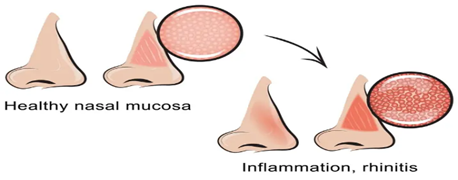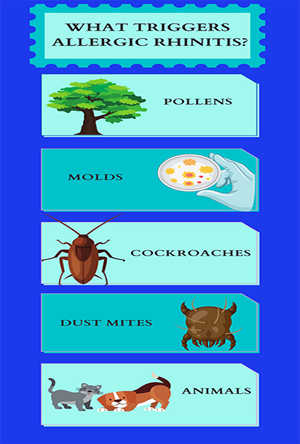What is allergic rhinitis or “hay fever”?
- Inflammation and irritation of the nose from an allergen
- A reaction of the immune system, in which it releases chemicals including histamine when exposed to the allergen

What causes it?
- If your child has allergies year around the most common causes are something they are exposed to regularly such as: cockroaches, pets, dust mites and indoor mold
- If your child has seasonal allergies the causes are more likely: pollen or an outdoor mold

What are the symptoms?
While symptoms may vary for each child, some of the more common symptoms include:
Seasonal allergies
- Sneezing, congestion, runny nose
- Nosebleeds
- Itchy nose, throat, eyes, and ears
- Watery eyes
Year-round allergies
- Recurrent ear infections
- Snoring or mouth breathing
- Continuous throat clearing
- Fatigue or poor school performance
- "Allergic salute" — when a child rubs his hand upward across the bridge of the nose while sniffing
How can I prevent it?
- When your child has an indoor allergy:
- Clean regularly to avoid dust and mold build-up
- Avoid pets if your child has a pet allergy
- When your child has outdoor allergies:
- Keep windows closed and use your air conditioning when needed
- Have your child change clothes and shower after playing outdoors
- Stay indoors when pollen count is high
What are the treatments for my child?
Your provider may recommend different treatments such as:
- Nasal steroid spray
- Nasal saline
- Oral antihistamines
If your child’s symptoms are not well controlled with medication options, a referral to an allergist might be the next step.
When to call your doctor:
- Your child’s symptoms are not improving or worsening
- Your child’s allergy symptoms are not responding to medications
- Your child is having new symptoms
This publication was adapted from information within American Academy of Pediatrics Patient Education Handouts, UpToDate Guidelines and Healthychildren.org
Reviewed by: TT D.O, AR D.O. | 07/2023


